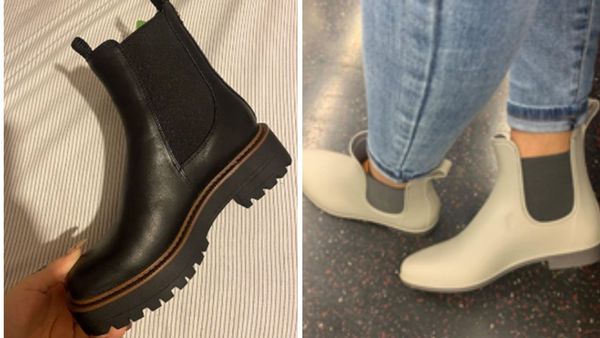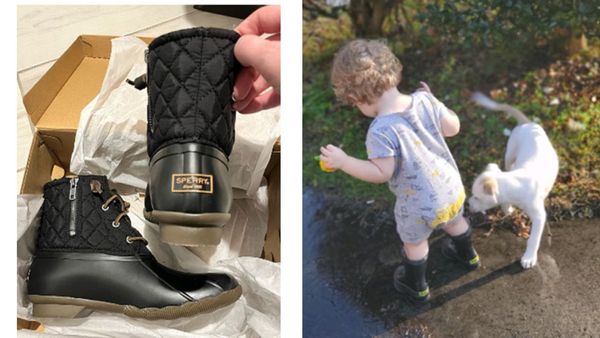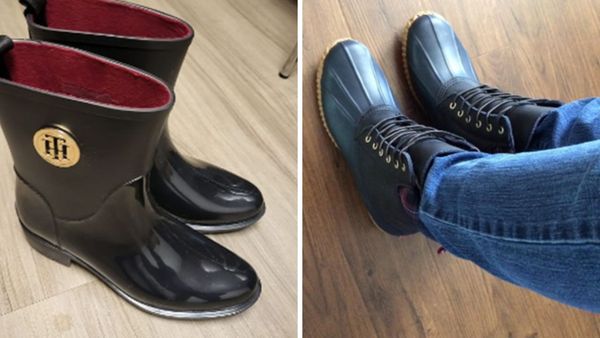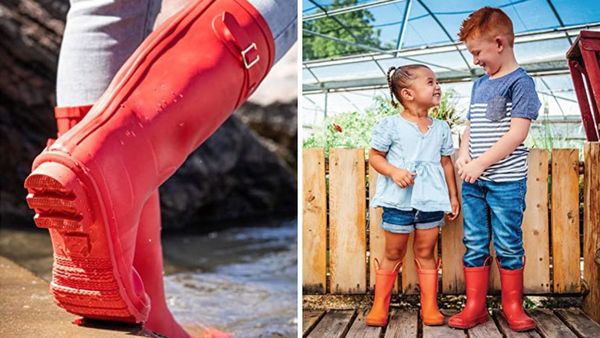Skiing in winter is a blast, but it can be cold!
That's why you need some good ski gear to keep you warm. One essential piece of clothing for skiing is a good ski fleece.
In this article, we will take a look at the best ski fleece items on Amazon and tell you which one is the best buy for you. So whether you're just starting out or are an experienced skier, read on to find the perfect ski fleece for you!
Read on to find the best ski fleece for your needs!
How We Choose
It's the dead of winter and you're gearing up for a weekend ski trip. You know you need to layer, but what should you wear?
Skiing can be so much fun, but it's also really cold. If you're not prepared, you'll end up freezing on the slopes.
We've got you covered with our list of the best warm and breathable ski fleece for layering. With our help, you'll be able to stay warm and comfortable all day long.
We hope you will discover your next great find from the products we’ve listed in this article. As an Amazon affiliate, we do earn commissions from qualifying purchases. However, each of our recommendations is our own and has been chosen with love and care. Enjoy finding your favorite supplies and equipment for your someday to your everyday!

The Greatest Men’s Full Zip Ski Fleece
Under Armour Men's Rival Fleece Full Zip Hoodie
Why It's Great
Stay warm, comfortable, and looking stylish with the Under Armour Men's Rival Fleece Full Zip Hoodie. Made of ultra-soft mid-weight fleece with a brushed interior for extra warmth, you won't find more stylish insulation this season. Snoop Dogg isn't the only one with pocket power; open hand pockets allow you to keep your hands toasty or store all your goodies. Ribbed cuffs & bottom hem give it that extra touch of pizzazz you need to stay looking fresh, or even beat out those low temperatures when you step away from the slopes. Raglan sleeves offer a sleeker look than just about any of the other hoodies out there as well as a broader range of motion. You won't get bogged down by fabric here; not with its fuller cut for complete comfort! A streamlined fit (not tight; not too loose) will also make sure you are ready for competitive events or just lounging around—your muscles will always be warm and ready to work without feeling stuffy! So don’t hesitate—get yourself an Under Armour Men's Rival Fleece Full Zip Hoodie today and strut your stuff in style!
Buyer Considerations
Need skiwear that'll stand up to any weather? When you want quality, reach for one of the most trusted brands in athletic wear and their ski fleece. Crafted with 100% polyester and a full-length zipper closure, it's designed to keep out even the chilliest of drafts. Plus, without compromising its performance, this ski fleece is conveniently machine washable - so there's no need to stress about dirt and grime ruining your ski season. Ready for ski trips and winter hikes alike, this ski fleece won't let you down!

The Greatest Ski Fleece Hat and Neck Warmer Set
Fantastic Zone Men's Winter Beanie Hat and Scarf Set
Why It's Great
Say goodbye to the cold winter weather with the Fantastic Zone Men's Winter Beanie Hat and Scarf Set! This 2-piece set is perfect for keeping you warm and stylish - perfect for those chilly days. Featuring a dual-layer design with a super thick acrylic knit construction and soft fleece lining, it has excellent heat retention properties so you can stay cozy without getting too hot. In addition, the beanie has a snug, stretchable fit that works well for both men and women - always looking fashionable even in extremely cold weather! Get your own set and enjoy staying warm while still looking great in winter!
Buyer Considerations
If you're looking for ski and snow gear that can keep up with your winter adventures, you've come to the right place. This ski fleece is the perfect combination of style and functionality: made from 100% polyester fabric, it comes with a knit beanie hat and pull-on loop scarf that you can use together or separately - great for outdoor activities or just to stay warm wherever you are. Plus, it's size-flexible, so from XS to XXL heads, this one size truly fits most! Finishing off its practical design is a selection of various solid colors - which means looking as fabulous as staying warm is not an issue. Whether skiing down slopes or taking a morning walk in the cold, this ski fleece has got your back!

The Greatest Men’s Pull-Over Ski Fleece
Under Armour Men's Specialist Henley 2.0
Why It's Great
Introducing Under Armour Men's Specialist Henley 2.0, the toughest, most stylish henley you've ever seen! This hybrid of sweater and fleece will keep you warm and comfy so you can be ready for any cold-weather adventure. The durable fabric of this henley is soft to the touch but powerful against the elements. Like Hercules at a dinner party, it'll make sure no chill gets near your bod. It locks in heat like a sweater but wicks away moisture and dries quickly like UA performance–it’s the perfect blend of form and function! With a mock stand collar construction, zip chest pocket and hidden snap placket, it looks as cool as it feels. In short, this bad boy makes sneezing in the snow a thing of the past. Now you can get out there and embrace winter like never before!
Buyer Considerations
For those passionate athletes with an eye on the slopes, Under Armour’s ski fleece is the perfect choice. Its ¼ zip pullover style design allows for a full range of motion and greater breathability so you can ski in style and comfort. The loose, fuller cut also adds to the appeal – it’s not only fashionable but utilitarian; giving active pursuits full range of motion without sacrificing style. Plus, it's machine-washable, so you get all of this convenience and performance – without any hassle or fuss. All of this reinforces Under Armour's mission: making all athletes better through passion, design, and relentless innovation.

The Greatest Thermal Underwear Ski Fleece for Men
Thermajohn Long Johns Thermal Underwear for Men Fleece Lined Base Layer Set for Cold Weather
Why It's Great
Are you always looking for an extra layer of warmth? Meet Thermajohn Long Johns – the thermal underwear set designed to brave even the coldest winter days. Let’s get one thing out of the way: these long johns are not your grandpa’s itchy and scratchy thermals! Crafted with ultra-soft fleece, this is the coziest base layer you’ll ever own. Plus, the moisture-wicking material helps keep you dry, while the tagless design and flatlock seams provide chafe-free comfort all day long. So don't let old man winter catch you with your pants down – stay warm (and cool) with Thermajohn Long Johns!
Buyer Considerations
Keep your body warm and comfortable this winter with the ski fleece of your dreams! Built to last, this 92% Polyester, 8% Spandex thermal for men offers 4 Way Stretch, providing you with the freedom of movement without any chafing. Layer up against chillier temperatures by adding a pair of these men's thermals as you ski down your favorite ski slope or even while stretching into a relaxed yoga pose indoors. Thanks to its pull-on closure style, thoughtful built-in fly, and machine wash feature, going outdoors or snuggling up in bed has never been comfier!

The Greatest Balaclava Ski Fleece
AstroAI Balaclava Ski Mask Winter Fleece Thermal Face Mask Cover
Why It's Great
Is winter weather getting you down? The AstroAI Balaclava Ski Mask Winter Fleece Thermal Face Mask Cover is here to offer ultimate protection, so the elements can’t keep you on the sidelines! Wear this balaclava as a full-face mask, open-balaclava, half-ski mask, or neckerchief and defy the cold temperatures, wind, dust, and snow. Plus, no need to sacrifice your comfort – with super soft polar fleece fabric, this non-irritating lightweight and breathable face cover is stretchy and provides unbeatable coziness. Don’t let fogging up glasses and goggles be an issue either; this face mask has an insulated mesh fabric that keeps the lenses clear. So go ahead, bundle up with an AstroAI Balaclava Ski Mask Winter Fleece Thermal Face Mask Cover - the perfect warm gift for friends, family (or yourself) this winter!
Buyer Considerations
Rugged ski fleece is definitely a must-have piece of gear for adventuring outdoors in cold weather. This full-face coverage ski mask has you covered in all the right places, featuring an extra-long fleece neckpiece for superior wind and cold protection – perfect for skiing, snowboarding, mountain climbing, and the like. Designed with the outdoor enthusiast's comfort in mind, these ski masks have no seams or open parts; it's a single connected piece and comes in three sizes to accommodate different shapes and sizes of heads, so you can rest assured that your ski mask will fit as comfortably as possible. Get ready to hit the great outdoors!
Ski Clothing Frequently Asked Questions
Skiing is a popular winter sport, but it can be difficult to know what clothes to wear.
Even if you've been skiing for years, it's easy to forget the basics of what clothing you need. And if you're new to skiing, the process of choosing appropriate ski clothing can seem daunting.
We've got you covered with our comprehensive guide to ski clothing. In this guide, we'll answer all of your questions about what clothes and materials to wear skiing, from head to toe.
What kind of fleece to wear for skiing?
When it comes to dressing for skiing, the most important item of clothing is your fleece. It should be comfortable yet warm enough for you to endure the extreme weather conditions that come with winter sports.
The ideal fleece when skiing should be made from a material that allows moisture to escape and will keep you dry while also providing sufficient warmth. You can find a large variety of specialized ski fleeces designed especially for use on the slopes which have features such as thermal insulation, windproofing, and breathability, making them perfect for cold weather activities. Look out for fleeces with a slim fit design so they don’t get in your way as you ski or snowboard and easily layer on top of other items such as base layers or waterproof jackets if needed.
If possible opt for a high-quality waterproof fabric such as GORE-TEX®, POLARTEC® or CLIMASHIELD® Apex – these fabrics are lightweight, durable, and provide excellent insulation capabilities which will keep you warm even in harsh winter temperatures. It’s also good practice to choose bright colors so that your group can more easily spot each other amid snowy terrain.
Finally, bear in mind that different types of fleece wear are best suited to different outdoor activities depending on the level of warmth needed - from synthetic mid-layers (lightweight), and softshells (waterproof) to expedition-weight polar fleece systems (heaviest). By taking into account all these factors when buying ski apparel, you'll be sure to remain comfortable throughout your adventure whilst keeping up with the latest trends!
Is it good to wear a fleece jacket?
Absolutely! Fleece jackets are a great option for those looking to stay warm and comfortable in cold weather. They're lightweight, soft, and breathable - perfect for layering up when the temperature drops. Plus, they come in a variety of styles and colors so you can find something that fits your look.
Fleece jackets have been designed to keep you warm without overheating you – they do this by trapping air inside the fabric fibers while allowing moisture vapor (sweat) out. This keeps your body at an even temperature whatever the weather outside is doing. Fleece is also incredibly durable – it has excellent abrasion resistance meaning it won't tear easily or pill like other materials might after multiple washes and wears. Another advantage of fleece is its versatility; you can wear them as a layer over t-shirts or sweaters during cooler months, or use them as outerwear on their own if temperatures aren’t too low yet still need some warmth from wind chill and small amounts of precipitation.
In addition to being warm and dry, fleece jackets are also extremely easy to care for — just machine wash cold with similar colors (no bleach) then tumble dry low heat on a gentle cycle — making them ideal for everyday wear whether it's a casual day out shopping with friends or weekend hikes with family members in tow. And since most fleece fabrics are made of recycled polyester these days, wearing one helps reduce waste too!
Overall, investing in a good quality fleece jacket will greatly improve both comfort level and outdoor experience throughout the winter season - especially when combined with wool base layers underneath - so yes indeed: fleece jackets are definitely worth picking up!
Can you use leggings as thermals for skiing?
The short answer to this question is: Yes, you can use leggings as thermals for skiing. However, in order to ensure you get the best performance out of them and stay warm on the slopes, there are a few key things to keep in mind.
First, it's important to consider the material that your thermals are made of. Leggings are typically made from lightweight synthetic fabrics such as polyester or spandex blends. These fabrics may be comfortable while providing a base layer of warmth however they do not provide optimal insulation nor protection against wind chill like more technical materials such as merino wool or fleece can. As such, if you plan on wearing leggings when skiing, it's recommended that you opt for a higher-quality synthetic blend with loads of stretch and breathability so your skin has room to breathe even during intense physical activities like skiing.
Another factor worth considering is layering underneath your thermals when hitting the slopes - having an additional layer between yourself and those cold temperatures will make sure that you stay extra warm! A good option could be tights or long johns with an ideal thickness rating between 100-250 gsm (grams per square meter). They will add just enough insulation without being too bulky which can potentially interfere with ski boots/bindings etc. You should also look for high-quality winter coats/jackets designed specifically for snow sports which will offer water/windproof protection against extreme weather conditions as well as moisture-wicking fabric technology (such as GORE-TEX) which helps keep sweat away from the body so skiers remain dry even on their longest runs!
Finally but most importantly make sure that whatever type of thermals you choose fits comfortably around those sensitive areas; we all know no one likes feeling restricted while trying to enjoy themselves outdoors in chilly weather! So ensure that your trousers have ample space at the waist/rise area plus enough articulation through hips & thighs - otherwise chafing due to tightness around these areas might ruin your fun time altogether :( Keeping all these in mind leggings certainly do have potential when used correctly so why not give them a try - happy skiing everyone!
How do I keep my neck warm while skiing?
When skiing, it is important to keep your neck warm. Your neck will be exposed to the cold temperatures of winter, and any breezes that may occur while you’re on the slopes can make your neck feel even colder. Thankfully, there are a few simple steps you can take to make sure your neck stays warm and comfortable while skiing.
Layering is key when it comes to staying warm in cold weather. Start by wearing a thermal base layer beneath your ski jacket or coat. This will help retain body heat and prevent heat from escaping as easily from around the neckline of your jacket or coat. Next, add a thick scarf or turtleneck for added insulation and warmth around the neck area - this will also cover up any gaps between the top of your jacket/coat and helmet for optimal protection against wind chill! Additionally, consider adding an extra balaclava (face mask) overtop of these layers as this provides extra comfort and protection during more extreme conditions like blizzards, snowstorms & high winds – all of which could affect how much warmth you get out on the slopes!
Finally, if needed don't forget about hand warmers! These pocket-sized packets are perfect for slipping into gloves or pockets – they’ll provide a gentle vibration of heat along with some thermal regulatory relief right near where it counts: around the chilly parts like necks! Be sure not to go overboard though; hand warmer packages tend to run at higher temperatures than body temperature so adjust accordingly as needed when stashing them away in places such as gloves & jackets - getting too hot would defeat their purpose altogether since they work best with small surface areas like hands/fingers rather than larger ones such as arms/shoulders etcetera!
By following these tips you should stay very warm throughout all those snow-filled days spent abroad on skiing adventures this season - good luck & have fun out there!
How cold is too cold for skiing?
What makes for a good day of skiing is highly subjective, and in turn, so does the question: “How cold is too cold for skiing?”. While it can vary greatly depending on the weather conditions and an individual's tolerance to cold temperatures, there are some general guidelines that skiers should follow when deciding how cold is too cold to ski.
First off, pay attention to the wind chill. Wind chill has a huge effect on how warm or cool you feel while skiing in the winter months. The temperature might be relatively mild at 30°F (minus 1°C), but if there is a stiff breeze of 15 mph (25 km/h) then it will feel like only 18°F (-8°C). In these types of conditions, the bitter wind can make frostbite more likely within just 30 minutes or so - especially with any exposed skin or areas not adequately covered by ski clothing or protective gear. Make sure you dress appropriately for extreme weather conditions such as this; bulky layers help keep your body heat from being taken away by the chilling winds!
The National Ski Areas Association (NSAA) also suggests that skiers and snowboarders should be aware of their own personal limits when it comes down to what constitutes “too cold” temperatures - regardless of external environment factors such as wind chill. If you find that your hands and feet become numb even with proper protection from extreme elements, then it may be time to take a break even before any frostbites appear on your extremities!
That said, however, many winter sports enthusiasts swear by mild winter days where temperatures range between 0-15°F (-18- -9 °C). On these moderately cool days with no gusts of biting winds, they say that skis slide smoother along the icy slopes due to less friction created between their boards and frozen surfaces! Additionally, these moderate temperatures could allow them longer periods outside without worry about losing feeling in their hands or feet due to frigid air against unprotected skin.
Ultimately though - further than simply answering "how cold is too cold" - all avid outdoorsmen should choose protective gear according to their own standards almost as much as they consider the actual temperature reading itself. As long as skiers bundle up enough so that neither excessive heat nor excessive chills bring forth any discomfort during rigorous activities like downhill racing or cross-country touring – only then would we deem moderate winter temps suitable for outdoor recreation year round!
Should ski clothes be loose or tight?
When choosing ski clothes, it’s important to take fit into consideration. Generally, the best fit for skiing is a loose one - not too baggy and not too tight. Ski clothing should be neither constricting nor overly loose. A looser fit allows for increased breathability and movement when skiing, whereas a too-tight fit can hinder performance by restricting mobility or even leading to overheating due to decreased air circulation.
In terms of layers, each layer should fit relatively loosely but at the same time remain close enough to your body so that you are still able to move comfortably on the slopes without any extra bulkiness from your clothing getting in your way. The idea is that you want your base layers (such as shirts and leggings) fitted snugly against your skin while allowing room for an extra mid layer (such as fleece) over it that gives you adequate insulation with some freedom of movement underneath it all – giving you just the right amount of ‘space’ between you and what you’re wearing while still allowing heat generated by physical activity (your energy output) escape through any openings in fabrics left between them all.
Your outer layer(s), such as a waterproof jacket or shell pants, will usually be slightly bigger than everything else in order to accommodate other layers beneath them while still fitting well overall and avoiding any unnecessary snags created by excess fabric bunching up around edges – like cuffs and underarm seams – which could prevent bearable temperatures when moving quickly down the mountain.
It’s also worth noting that if you choose items from different brands based on size charts alone then there may be some variability between individual styles/cuts so make sure whatever items you pick out feel comfortable whenever worn together since this is ultimately what matters most when skiing anyway!
What do people wear under ski pants?
When preparing to hit the ski slopes, most people wonder what to wear beneath their ski pants. It's an important question as the right type of clothing can provide a comfortable and warm experience while skiing, while wearing incorrect items may lead to varying levels of discomfort.
Generally speaking, it is recommended that you wear thermal underwear or base layers under your ski pants. Thermal underwear is specifically designed for activities in cold weather, as it has a snug fit that keeps warm air close to your body and blocks out cold air. Choose a lightweight thermal material such as polyester or wool blend for better breathability and moisture-wicking capability - these will help keep you cool and dry when skiing.
Another great option is compression base layers; they are made from thicker fabric than traditional thermals and offer added warmth with improved muscle support, blood circulation, and joint stability - all of which are essential for performance on the slopes! You should also look for sweat-wicking properties in order to maintain maximum comfort during your time outside. Additionally, be sure that whatever garment you choose fits well around your chest, waist, and hips so there's no excess fabric bunching up inside your snow trousers.
If one item isn't enough insulation on particularly cold days or nights on the mountain then you can layer up with additional pieces such as upper body fleeces or insulated jackets; make sure these too have good breathability features so that you don’t overheat while skiing hard! A helpful tip here would be to invest in merino wool garments due to their soft texture along with natural temperature-regulating properties—this will ensure optimal comfort even when temperatures dip below 0ºC!
Finally, ensure that any shoes/boots worn over the top of thermal underwear aren’t too tight - otherwise, this can restrict blood flow leading causing foot fatigue throughout the day – not something anyone wants when they’re trying to enjoy themselves outdoors!
How many layers do you wear when skiing?
When skiing in cold temperatures, you should always wear enough layers to stay warm and comfortable while out on the slopes. It's important to know how many layers are best for your individual needs as well as understand the weather conditions that day.
Typically speaking, wearing 3-4 different layers is a good starting point for remaining adequately warmed up on the ski hill. The base layer should be lightweight and breathable - typically made of merino wool or synthetic materials such as polyester or nylon. This allows sweat to evaporate away from the skin so moisture does not get trapped between fabric layers, which can cause discomfort and chilliness over time! For your middle layer, you'll want something a bit thicker that has good insulation properties such as fleece or down. Lastly, an outermost waterproof shell layer will provide protection against windy conditions and precipitation while also allowing some breathability (i.e., snowboarding jacket).
An additional layer of clothing can help keep your core temperature regulated if you’re taking more breaks throughout your ski day - this could include a light puffer jacket (down) or an insulated vest underneath your waterproof shell jacket for added warmth during colder days! In addition to these key items of clothing, there are other accessories like gloves/mitts and neck gaiters which can further protect you from cold winds when skiing at higher altitudes. Proper layering ensures that no matter what temperature it is outside, you’ll be able to enjoy comfortable skiing all winter long!
What fabric is best for skiing?
When it comes to choosing the best fabric for skiing, there are a few main considerations. For starters, you want something that is lightweight and breathable so you don't overheat or become uncomfortable on long ski runs. You also need a fabric that will keep you warm and insulated in cold temperatures while still allowing your body to move with ease.
One of the most popular fabrics used in skiwear is nylon. Nylon is an extremely lightweight fabric that allows freedom of movement without adding too much extra weight - ideal for when you're out on the slopes all day! It's also highly durable and resists abrasion, ensuring that your clothes will endure any high-impact activities without tearing or fraying too easily. What's more, nylon isn't very expensive so it won't put a big dent in your wallet either!
Another great option is polyester as it has similar qualities to nylon but with some added benefits. Polyester wicks moisture away from your skin faster than other materials, meaning that any sweat produced won’t get trapped close to your body like other thicker fabrics might do; this helps keep you feeling comfortable even during strenuous ski runs! Polyester can also be treated with DWR (durable water-repellent) coatings which help repel outside moisture – perfect if snow starts falling mid-run! Last but not least, polyester dries incredibly quickly so if any wetness does make its way inside your layers they’ll soon dry up again after just one run down the piste!
In addition to nylon and polyester, there are various other fabrics that can provide optimum comfort during skiing trips too – including wool blends such as merino wool; this material traps heat against the body longer than synthetic fibers – keeping skiers nice and snug even after hours out on the mountain! Alternatively, fleece offers stretchy warmth at an affordable price point - ideal for those traveling on a budget who still want plenty of comfort! Finally, Gore-Tex® is another material often seen in skiwear due to its waterproofing capabilities; jackets made from this membrane don’t allow snow or rain through yet remain highly breathable - resulting in unbeatable protection come wintertime.
Overall each skier should consider their individual needs before making a purchase decision: what type of weather conditions may they encounter? How much flexibility/insulation do they require? And how often will they ski? That being said – whichever fabric you choose make sure it fits correctly so air can circulate encouraging efficient thermal regulation throughout any winter sports activities.
Why should you not wear cotton when skiing?
When it comes to skiing, the type of material you choose to wear is incredibly important. Cotton should not be worn when skiing for a variety of reasons. First and foremost, cotton retains moisture and will not keep you dry even in cold temperatures like those experienced while skiing. When wet, the fabric quickly becomes heavy and slows down performance on the slopes. Additionally, because cotton holds onto water it can take longer to dry than other fabrics. This means that if you become wet while wearing cotton clothing while skiing your clothes could stay damp throughout the day which could make your experience less enjoyable due to being cold and uncomfortable.
Another reason why cotton should not be worn when skiing is because it does not provide adequate insulation from cold temperatures or protection from wind chill factors which can cause hypothermia or frostbite in extreme conditions if one's body heat is lost too quickly due to inadequate clothing layers. Further, many ski resorts require that skiers dress properly for safety reasons in order to protect them from any accidents caused by weather-related issues such as snow blindness or sunburns caused by UV rays reflecting off of fresh powdery snow fields so having proper protective gear with adequate warmth and waterproofing properties is essential for enjoying a great day out on the slopes without any worries about getting hurt due to insufficient clothing choices!
The greatest ski fleece for you? Here is our recommendation.
So, whether you’re just getting started and need an entry-level ski fleece to get you through the basics or if you’re a seasoned pro in search of the best of the best, one of these products is sure to be perfect for you. Be sure to click the check sale price button on your favorite option now so that you can order yours today and hit the slopes as soon as possible!






